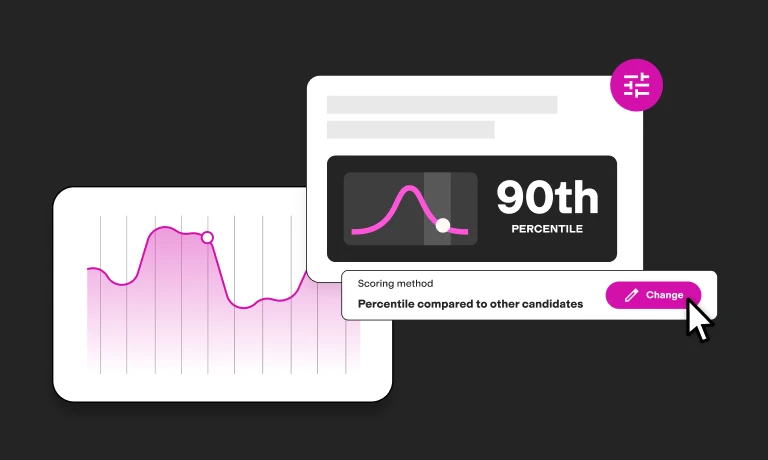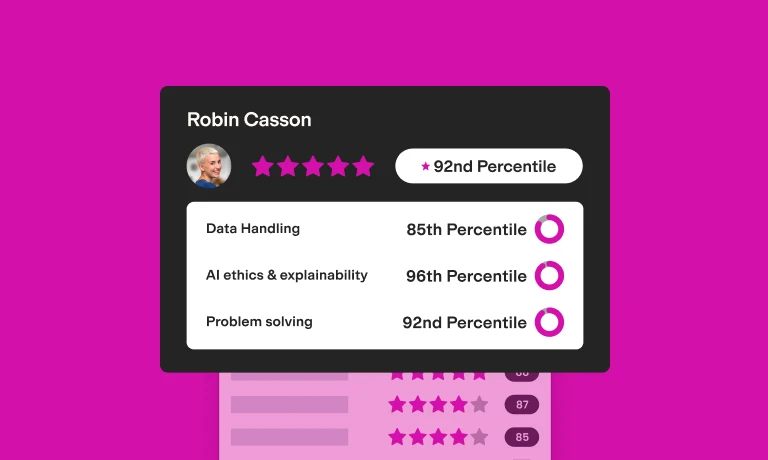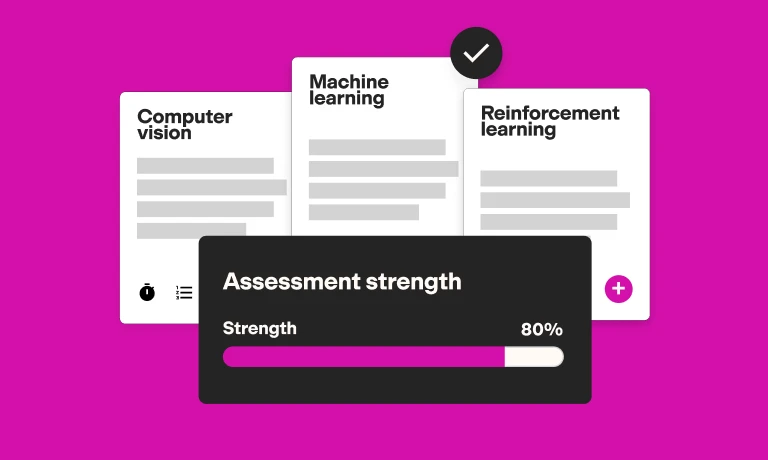How personalized coaching can improve your bottom line – and boost diversity
Now more than ever, employees want to work in diverse, inclusive, and supportive workplaces.[1] They also want to stay loyal to companies where they’re exposed to a range of perspectives, backgrounds, and experiences.
This means companies are re-evaluating their diversity and inclusion (D&I) strategies from both an ethical and business standpoint to attract the best talent. From improved employee retention to more creative problem solving, it’s clear that more diverse teams are good for business – and your people.
However, to retain top talent and maximize the return on investment (ROI) of your hires, you can’t simply focus on the diversity part (or hitting diversity quotas) without considering the “I” of it all.
To create a truly diverse and inclusive organization, you need to bring out the best in everyone and unlock their full potential.
Personalized coaching can help employees flourish by bringing fresh perspectives on personal challenges, enhancing decision-making skills, increasing confidence, and improving performance. It can also help employees from underrepresented groups progress and reach leadership levels. This, in turn, positively impacts diversity by giving others a role model.
In this post, we’ll explore how implementing a personalized coaching approach helps develop employee skills and boosts satisfaction, engagement, and innovation. We’ll also look at how personalized coaching can improve your D&I efforts and show you how to develop a personalized coaching plan for your company.
Table of contents
How does personalized coaching benefit employees?
A strong coach can help identify employee strengths and areas for improvement. They can also provide targeted feedback and design tailored development plans. This helps employees develop the right skills for their specific goals or objectives and reach their full potential.
According to our State of Skills-Based Hiring report, when you use talent assessments to hire and continually test for skills, you can build a more diverse workforce.
When coaching is used to help develop employee skills, you can create a more dynamic company culture with opportunities for personal growth, which makes people happier and likely to stay longer.
We spoke to Ally Jones, executive coach, leadership facilitator, and co-founder of Coachable, for more insight into the benefits of personalized coaching. According to Ally, there are multiple benefits to coaching, including confidence development.
“What you’re doing is creating a space for somebody where they’re able to develop their ability to make better decisions and be more aware of who they are as an individual. So their level of self–awareness is significantly improved. This creates confidence in their sense of self, but also in their ability to self-manage, and to self-regulate – and to show up as the person they intend to be.” – Ally Jones, co-founder of Coachable.
Definitions: Coaching and mentoring are two distinct forms of professional or personal guidance. Coaching aims to bridge the gap between a person’s current abilities and their desired outcomes by focusing on skills development, specific challenges, or areas of improvement. Coaches use various techniques, tools, and strategies to facilitate learning and development in specific domains. This means coaching tends to be task- and goal-focused. Mentoring relies on the direct experiences and expertise of the mentor and is typically focused on a mentee’s overall growth in a specific field. Mentors are more experienced than their mentees and draw on their wisdom to help shape general career development with useful tips, lessons learned, and advice.
The benefits of coaching employees from underrepresented groups
The role of a coach is to create a safe and enriching environment for somebody to understand themselves and the challenges that are presented to them in the context of their current situation, Ally says.
For meaningful organizational change to happen for underrepresented groups, leadership needs to create a really inclusive and safe space for people to be able to thrive, she affirms.
Coaching individuals from these groups gives them the opportunity to speak about their experiences in a secure setting. Or, as Ally puts it, “without the parameters of ‘this isn’t going to be accepted.’”
Coaching is an opportunity to discuss concerns, critically analyze performance, address areas of growth, and consolidate strengths. As a result, employees are better equipped to take on new responsibilities, strategize their career development, and move into roles across other departments and in areas of leadership.
This levels the playing field and can positively impact D&I throughout your organization.
Next, let’s take a closer look at how personalized coaching can benefit companies.
The best insights on HR and recruitment, delivered to your inbox.
Biweekly updates. No spam. Unsubscribe any time.
How does personalized coaching benefit companies?
In addition to building more diverse leadership teams, coaching can help those teams improve company culture and their leadership style by bridging the awareness gap between their intent and their impact, Ally says.
This gives leaders a clearer vision of how they come across to their teams and enhances their ability to be inclusive. This can lead to a more diverse workforce by giving people a role model and something to aim for.
Personalized coaching also helps keep employees motivated and on track, increasing their chances of meeting important benchmarks and milestones. This means it’s easier to reward and retain talent based on their performance and skills development, which saves on recruiting costs by lowering employee turnover.
“You’re left with a person that has much more confidence in their own abilities and knows how to play to their strengths, communicate, and build relationships better. They’re loyal and engaged to the company and feel valued. I can’t see a negative outcome there for the business. You get an increase in performance for the individual and the ripple effect that creates across the business.” – Ally Jones, co-founder of Coachable.
However, Ally brings up a common concern among companies when it comes to personalized coaching: What if the individual chooses to leave the organization once they’ve developed new skills?
Ally sees this as “a really good outcome […] – if somebody is unhappy or feels that they’re not thriving in their current environment, then you’re facilitating them to do that elsewhere. This feels like a really nice exit from the business rather than perhaps a much more crunchy one. It also means you have an opportunity to move somebody into that role that is a much better fit.”
How to develop a personalized coaching program in your company
To create an internal coaching program in your company and help your employees do their best work, you need to first consider what you want to achieve.
“If organizations are saying ‘this is what we want to do,’ I think they need to take it seriously and really invest in developing or equipping those internal coaches with the right toolkits. As well as being really clear about what coaching is, and what it’s not.” – Ally Jones, co-founder of Coachable
With that in mind, let’s take a look at our first step:
1. Identify expectations, goals, and outcomes
According to Ally, you need to define what success looks like for you before launching your coaching scheme.
Here are some questions to ask:
What are the desired outcomes?
What’s the purpose of doing an internal coaching program?
What am I hoping to achieve through coaching?
What is my company’s coaching culture?
What are the expectations of my internal coaches?
By answering these questions, you can identify expectations, goals, and outcomes for your coaching program and understand how they tie into organizational objectives. This will give you a clear picture of the type of coaches and skill sets you need to achieve your desired results.
For example, if your main focus is to reskill and upskill employees quickly, you might train internal coaches to work with talent assessment software that tests employee skills and measures their progress.
2. Identify desired skills, qualities, and behaviors of a good coach
A good coach can see beneath the surface level problem, Ally says. This means they need soft skills like empathy and emotional intelligence to deeply understand their coachee and create an environment that inspires self-reflection.
Another essential skill is good communication, which includes clarity, a positive tone, active listening, and the ability to ask the right questions. Coaches need to be able to adapt their communication and coaching styles to meet the needs of different situations, individuals, and learning styles.
Confidentiality is also paramount in coaching relationships. A good coach should demonstrate trustworthiness and maintain strict confidentiality.
Further, personal coaches should have an understanding and knowledge of your organization, its culture, and the specific challenges employees face. While they don’t need to be experts in every area, they should have a strong foundation in the relevant subject matter to offer credible guidance.
Ally uses the analogy of an iceberg to describe the work of a personal coach. “It’s what they can see [in a person] versus what’s underwater, and how they can really challenge and take people outside of their comfort zone,” Ally says.
3. Identify and address unconscious bias
For your coaches to be able to objectively and accurately guide their coachee, they need to make decisions with a clean slate.
Unconscious bias can present a challenge here.
This makes it the coach’s responsibility to “ask open questions to remove limiting beliefs, remove assumptions, and try to challenge those unconscious biases,” Ally says. “And, I suppose, taking them from unconscious to conscious biases where you can self-manage around them.”
To help identify and address unconscious biases in your coaches, you can:
Establish peer-to-peer coaching or group supervision in which coaches take turns being both the coach and the coachee. This lets coaches practice their coaching skills while also receiving coaching themselves, creating an opportunity to explore and enhance their individual practice.
Ask for coachee feedback to better understand their experience and how they’re finding the program.
4. Choose your coaches and coachees
Now that you’ve addressed unconscious bias and outlined your coaching goals, expectations, and desired skills, it’s time to choose your coaches and coachees.
Here’s how:
Use talent assessments to evaluate the fitness of employees, managers, or leaders to be a coach and identify relevant skills gaps. For example, use a Communication skills test to determine their ability to communicate clearly and effectively or a Problem solving test to understand a candidate’s ability to define problems and make decisions.
Survey potential coachees about their level of interest in the program and whether they would like to participate before signing them up.
Pro tip: Check out our test library and find the best person with all the right skills for the role.
5. Set program duration and develop skills
Once you’ve selected your participants, it’s important to outline how long the coaching relationship between the coach and coachee will last. This helps set expectations and establishes a timeline for achieving the desired results.
To help coachees develop skills during coaching, you should also:
Set clear learning goals and identify the specific skills that need to be developed. Use talent assessments to better understand employees’ current skills and any skills gaps you need to fill.
Encourage participation during the coaching process and support a growth mindset. This means people are willing to put the work in to develop and grow – and know how to take constructive criticism.
Promote self-reflection and encourage coaches and coachees to assess their progress, identify patterns, and understand the impact of their actions.
6. Test and measure success
An internal coaching program allows you to measure success based on data from evaluations. However, it’s important to remember that coaching is a personal experience, not a one-size-fits-all training solution with the same results or benefits across the board.
To test and measure the success of your coaching program:
Use talent assessments to evaluate employee and coach skills development over time, and to find new skills or areas of growth to focus on.
Set and measure key KPIs like employee engagement in coaching sessions, number of sessions attended, talent assessment scores, number of coachees that continue to the end of the coaching program, or how regularly sessions are rescheduled or kept.
When people drop out, “This might be an indicator that the person wasn’t getting as much as they’d want from the coaching relationship,” Ally says. This means you need to understand the reasons why so you can improve the program.
Skills-based hiring: Maximize the benefit of personalized coaching
Carefully structured personalized coaching programs can support your D&I initiatives by benefiting individuals from underrepresented groups. Additionally, by bringing out the best in all your employees, you create a more confident pool of in-house talent with the necessary skills to grow within your organization. This creates a positive feedback loop of supported and accomplished employees who can help the company achieve even greater success. You can implement a personalized coaching scheme by:
Identifying expectations, desired skills, and unconscious bias
Choosing your coaches and coachees
Setting duration and developing skills
Testing and measuring success
Use talent assessments to hire and develop people with the right skills to be effective coaches. You can also use them to identify skills gaps, measure employee performance, and evaluate professional development. By taking advantage of skills-based assessments, you can identify, attract, and retain the best talent while improving your company culture, diversity, and bottom line.
Want to develop your employees’ professional skills and abilities? Skills-based talent assessments let you identify, develop, and test skills throughout the coaching process for better results. Download the 2022 State of Skills-Based Hiring report to learn more. |
Sources
“Harnessing The Power Of Inclusive Voice In Your Organization.” (2019). Forbes. Retrieved June 19, 2023. https://www.forbes.com/sites/forbessanfranciscocouncil/2019/08/06/harnessing-the-power-of-inclusive-voice-in-your-organization/?sh=22de6cca1a3f
You've scrolled this far
Why not try TestGorilla for free, and see what happens when you put skills first.

















